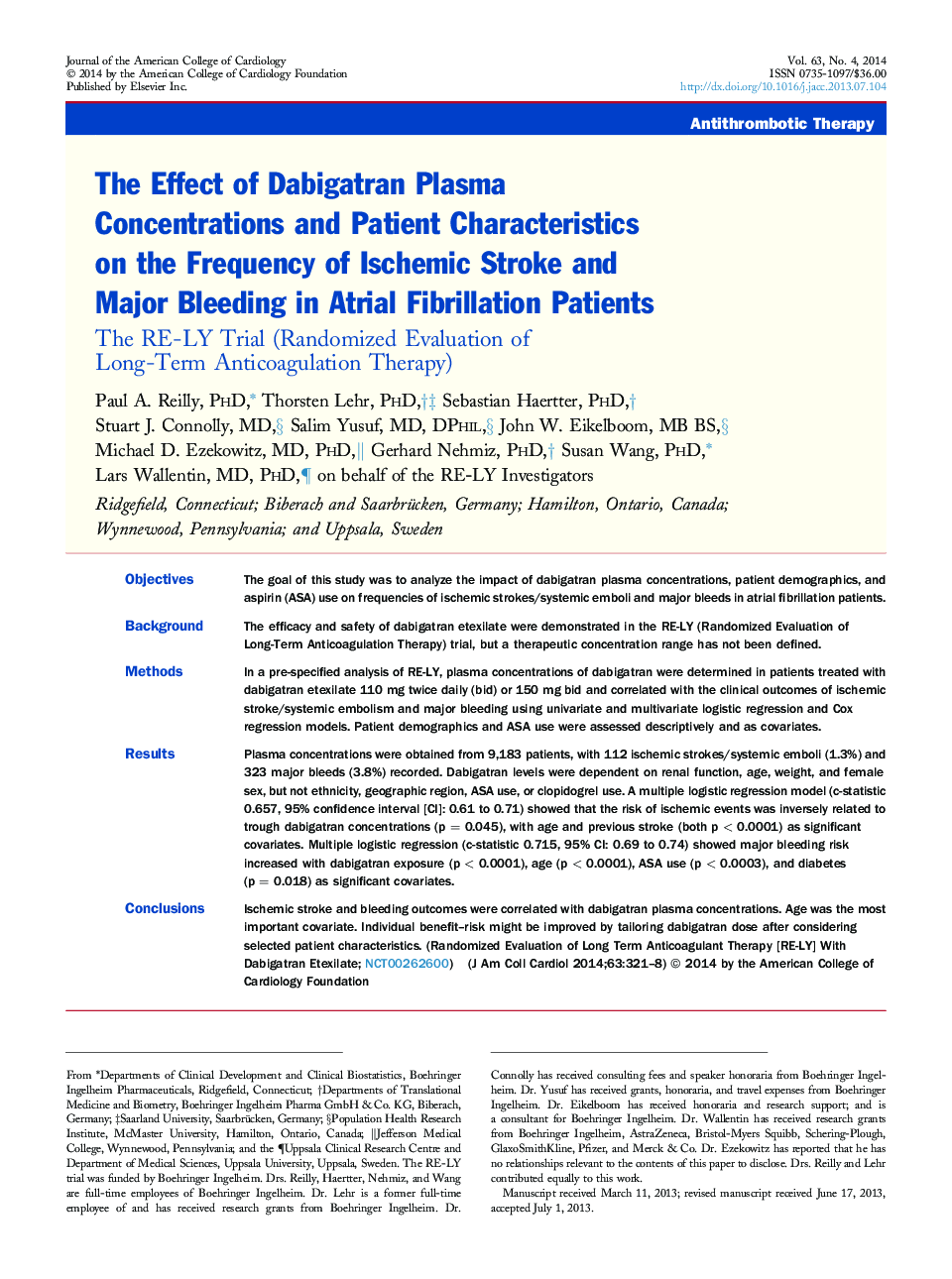| کد مقاله | کد نشریه | سال انتشار | مقاله انگلیسی | نسخه تمام متن |
|---|---|---|---|---|
| 2946201 | 1577120 | 2014 | 8 صفحه PDF | دانلود رایگان |

ObjectivesThe goal of this study was to analyze the impact of dabigatran plasma concentrations, patient demographics, and aspirin (ASA) use on frequencies of ischemic strokes/systemic emboli and major bleeds in atrial fibrillation patients.BackgroundThe efficacy and safety of dabigatran etexilate were demonstrated in the RE-LY (Randomized Evaluation of Long-Term Anticoagulation Therapy) trial, but a therapeutic concentration range has not been defined.MethodsIn a pre-specified analysis of RE-LY, plasma concentrations of dabigatran were determined in patients treated with dabigatran etexilate 110 mg twice daily (bid) or 150 mg bid and correlated with the clinical outcomes of ischemic stroke/systemic embolism and major bleeding using univariate and multivariate logistic regression and Cox regression models. Patient demographics and ASA use were assessed descriptively and as covariates.ResultsPlasma concentrations were obtained from 9,183 patients, with 112 ischemic strokes/systemic emboli (1.3%) and 323 major bleeds (3.8%) recorded. Dabigatran levels were dependent on renal function, age, weight, and female sex, but not ethnicity, geographic region, ASA use, or clopidogrel use. A multiple logistic regression model (c-statistic 0.657, 95% confidence interval [CI]: 0.61 to 0.71) showed that the risk of ischemic events was inversely related to trough dabigatran concentrations (p = 0.045), with age and previous stroke (both p < 0.0001) as significant covariates. Multiple logistic regression (c-statistic 0.715, 95% CI: 0.69 to 0.74) showed major bleeding risk increased with dabigatran exposure (p < 0.0001), age (p < 0.0001), ASA use (p < 0.0003), and diabetes (p = 0.018) as significant covariates.ConclusionsIschemic stroke and bleeding outcomes were correlated with dabigatran plasma concentrations. Age was the most important covariate. Individual benefit–risk might be improved by tailoring dabigatran dose after considering selected patient characteristics. (Randomized Evaluation of Long Term Anticoagulant Therapy [RE-LY] With Dabigatran Etexilate; NCT00262600)
Journal: Journal of the American College of Cardiology - Volume 63, Issue 4, 4 February 2014, Pages 321–328